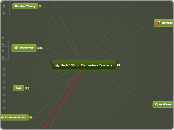Math 156 for Elementary Teachers
Problem Solving
Identifying the Problem (Understanding the Problem)
Divising a Plan
Using/ Carrying out the Plan
Looking Back/ Reflecting on the Answer
Numberal Systems
Tally System
Egyptian System
Mayans/ Babylonians
Roman Symbolic
Hindu- Arabic (what we use)
Bases
Operations
Subtraction (-)
"Take Away" Problems
Comparison Problems
Missing- Addend Problems
Addition (+)
Closure Property
Commutative Property
Associative Property
Identity Property
Multiplication (x)
Repeated Addition
Discrete
Continuous
Area Model (Array Model)
Cartesian Product Model
Division (/)
Partition (Sharing)
Measurement (Repeated Subtraction)
Scaffolding
Column Division
Four Fact Families
Prime/ Composite Numbers
Prime
Composite
Fundamental Theorem of Arithmetic
Number Theory
Even numbers
Odd numbers
Divisibility
Sequences
Elements
Arithmetic Sequences
Geometric Sequences
Recurrence Relationship Sequences
Sets
Universal Set
Subset
Proper Subset
Empty Set
Equal Sets
Equivalent Sets
Compliment of a Set
Greatest Common Factor
GCF (a,b) = n
Least Common Multiple
LCM (a,b) = m
Ratios
Rational number
